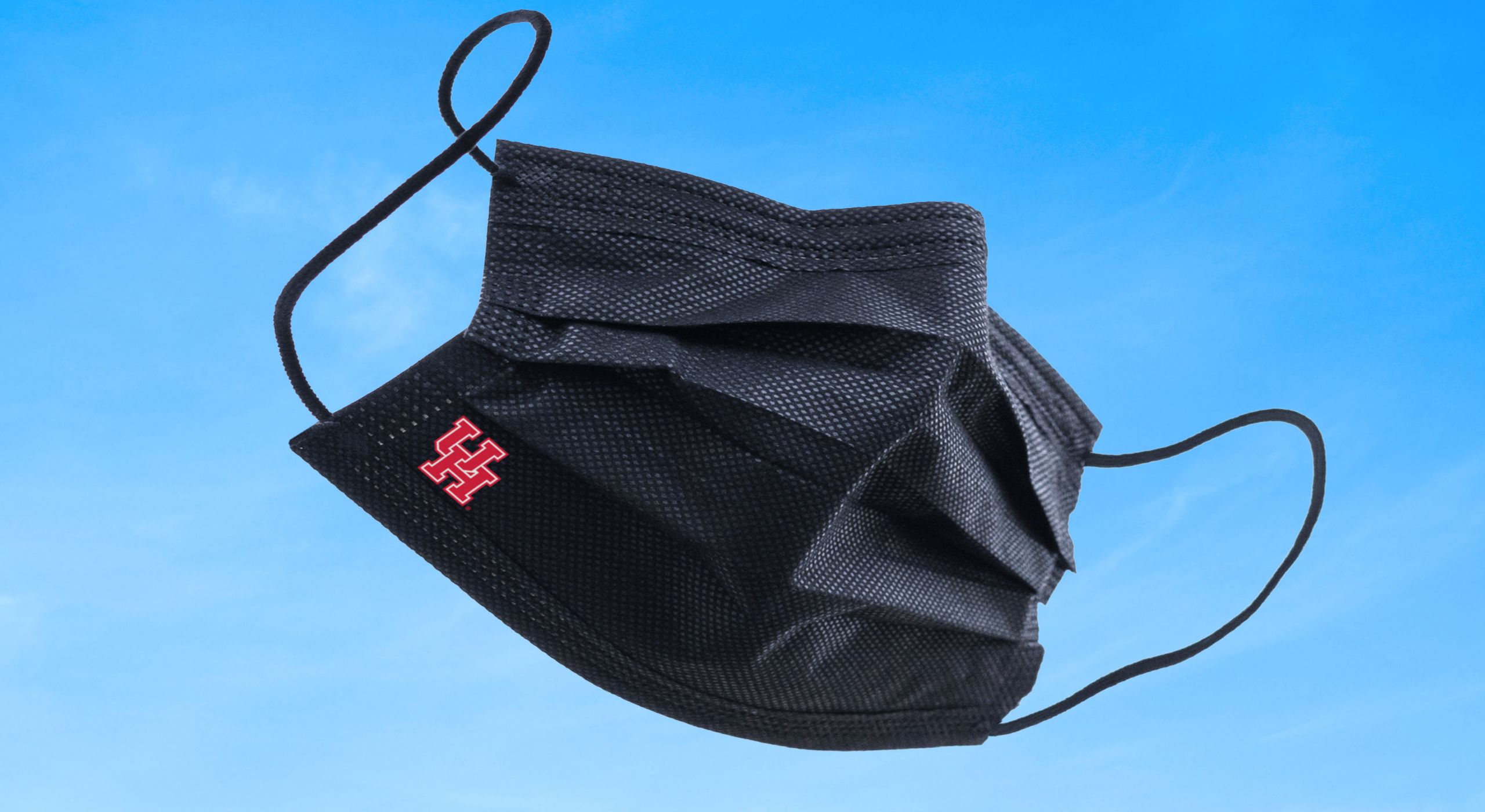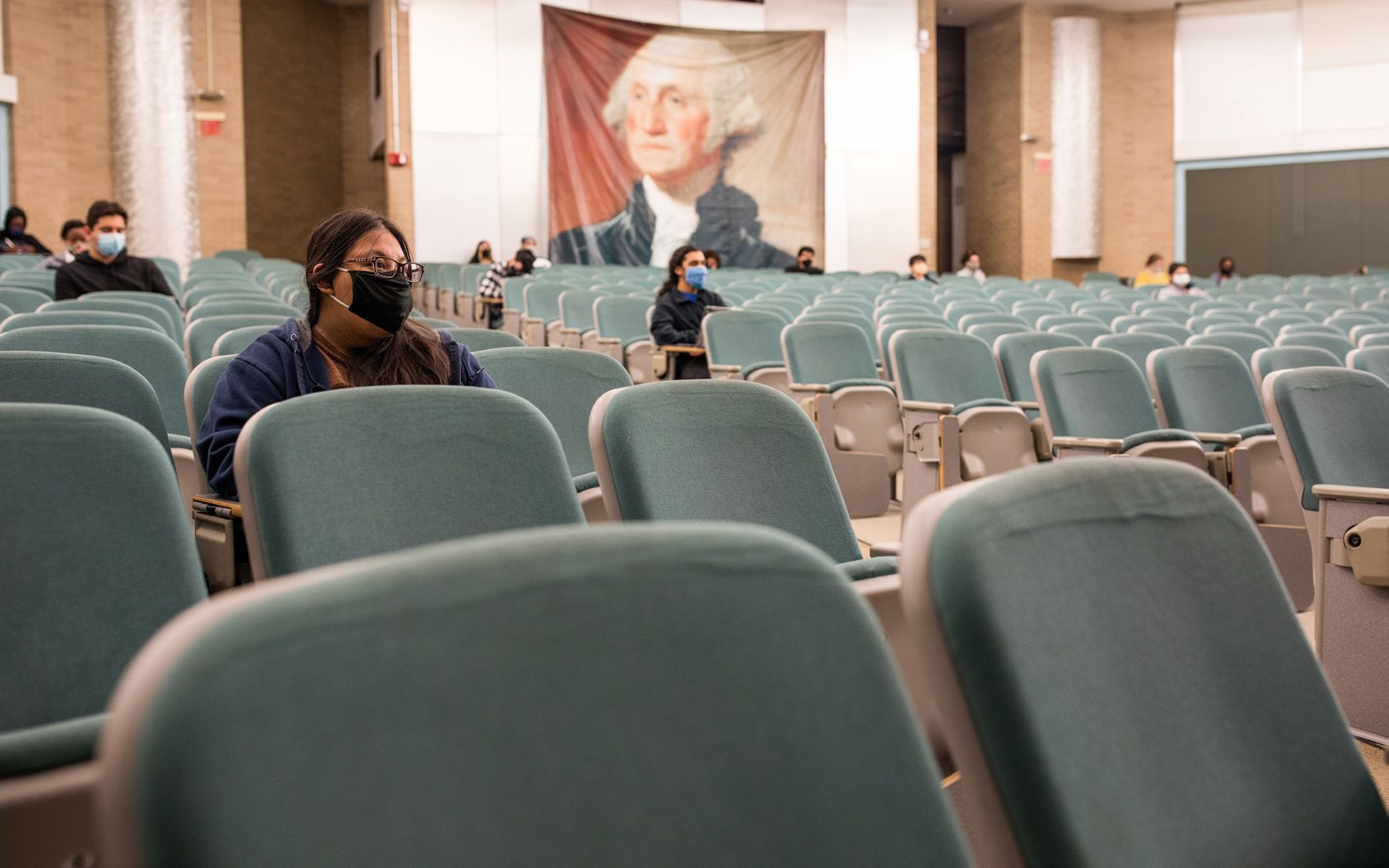COLLEGE AFTER COVID
What Will UH Look Like After the Masks Come Off and the New Normal Arrives?

Will the New Normal be a dramatic change or the same old stuff? Yes!
The COVID-19 pandemic has placed higher education in flux, and no one is sure where this is all headed. There’s a good chance that by the time you finish this article, the situation may have changed again. If you want the academic version, we turn to Heraclitus who, as every freshman philosophy major knows, tells us we can’t step in the “same” river twice – that is, the water is ever flowing. Any attempt to pin down an exact description of what the New Normal may be equally all wet.

We keep using the expression the New Normal as if it were a tangible and unanimous condition, hovering on a horizon just a few tantalizing weeks … months … years in the distance. In truth, there are numerous scenarios about what higher education will look like when “normal” resumes and “new” makes itself known.
How many students will want to return to face to face instruction, and how many will have developed a preference for online? In the midst of an economic downturn, a growing number of students are asking for additional aid. Others are demanding discounts, arguing they should not have to pay for campus amenities if they’re mostly learning from home. Ditto faculty – what if too many don’t want to return to the classroom? Are degrees still important, or should we focus more on skill-based microcredentials? How (as UH Hobby School Founding Dean Kirk P. Watson deliberates on Page 44) should we develop a useful workforce?
Even the basic value of higher education has been called into question. In 2013, 70% of Americans indicated they believed college education is “very important,” but last year that figure sank to 50%. How will higher education handle the direct financial hits it took, and is the basic business model still viable? If not, what could replace it?
Obviously, it’s a situation that demands further study, but that’s what universities do, right?
Charting a Tumultuous Sea
Sure enough, the University of Houston established a New Normal Task Force – see Page 42 – to provide President Renu Khator and her leadership with guidance to help UH fulfill its educational mission, remain relevant and become sustainable after the impact of the COVID-19 pandemic has passed. In a series of six analytical “white papers” dealing with such comprehensive issues as academic instruction and workforce development, along with a few specific recommendations concerning initiatives like microcredentialing and information technology, the Task Force has offered a possible road map for the University to follow through the tangled highways (and detours) that now stretch before us.
But here’s a provocative question: Is our destination getting back on track or forging new paths forward?
“I personally think it’s too early to tell just how significant of an impact COVID-19 will have on the longer-term future of higher education,” said Lyle McKinney, associate professor and director of Higher Education Leadership & Policy Studies in the College of Education. McKinney studies how colleges work and points out that UH, like many institutions, has been grappling with more than one “plague.”
“Which pandemic? COVID-19? Racial injustice? Disruptions due to hurricanes and winter storms? The growing problems about rising costs and falling enrollment that confront higher education in general? UH has had so many external factors shaping our services and how we go about meeting the needs of our students and communities,” he said. “Much of this is happening in ‘real time’ and without much time for us to think and plan for the long term.”
In other words, we’ve been so busy coping, there’s not been much time for thinking deep thoughts, strategizing and shaping what the New Normal will be. But let’s not give short shrift to the virtues of coping.
“The COVID-19 pandemic has shown that colleges and universities are far more agile and resilient than many previously believed,” the higher education publication EDUCAUSE Review observed – then asked a fundamental question: “How do we sustain our advancements into the future?”
Building on Best Practices
How indeed?
While the conclusions reached by the UH New Normal Task Force, and other such groups, are intriguing and instructive, the final arbiter will be what students (and parents) will accept, what faculty will agree to and what the economy will allow.
Even though our Magic 8 Ball says, “Reply hazy – try again later,” it does appear that the most obvious issue to be dealt with in the New Normal is that of remote instruction. And, for that matter, its companion, working from home. Now that this genie has been let out of the bottle, can it be put back? Will it fit?
Robert Zaretsky, a history professor in the UH Honors College, addressed the issue recently in a Boston Globe & Chronicle essay titled, “I Fear My Students Will Decide They Prefer Online Classes,” wondering if he and his academic colleagues will be facing a critical mass of students who no longer hold the face-to-face experience in such high esteem.
“Many of their fellow students have come to prefer online classes,” he writes. “While I suspect that some of those students would rather multitask after signing in for a class, many others have compelling reasons. They live in places that require long commutes; they live with family members who require assistance; or they live with anxieties that make them seek solitude. Or they live in student bubbles and do not crave any more social interaction than they already have. This is why I suspect our campus will never fully return to its former bustling life. Hallways will no longer be hollow, but they will not be humming. What we glimpse at the end of this tunnel is not light but a kind of twilight.”
But for every half-empty glass like that, there seems to be those who see it half-full.
“Mostly what I’m hearing from my students and faculty peers is that working from home and being fully online has created a greater appreciation for, and desire to return to, teaching and learning together in person and on campus,” said McKinney, echoing the public position of President Khator and many other leaders in higher education.
“Online education was already a fairly big component of higher education instruction before the pandemic,” he added. “While there may be more students who register for more fully online courses in the future – because they have experience now – when people think about the benefits and rewards of a great ‘college experience,’ I just don’t think most people envision it primarily occurring at home, alone, on a laptop.”
A Changing of the Guard
Lest anyone confuse that with a simple call for a return to the Good Ol’ Days, consider this conclusion from “The New Normal: Higher Education in a Post-COVID-19 World,” a probing report from Teachers Insurance and Annuity Association of America:
“COVID-19 has accelerated existing headwinds in higher education, and leaders may need to seize this opportunity as a catalyst for institutional transformation. Instead of expecting things to ‘return to normal,’ leaders can anticipate a new normal – one that reflects the educational and social purpose they are looking to fulfill alongside existing financial realities.”
Even if the day-to-day operations of the New Normal turn out to look and feel a lot like the Old Normal, that doesn’t mean undergoing the pandemic itself hasn’t prompted a significant change in the hearts and minds of many of us involved in higher education.
“These experiences have further exposed areas of deep inequality and disparity –racial, economic, health care – within our society,” Professor McKinney noted. “Higher education should make the world a better place. So, I hope we make time to reflect on lessons learned from the pandemic and use what we’ve learned to become an institution that does even more to make our society better and more just.”
But no matter what particular form or fashion the New Normal eventually takes, there seems to be a consensus about when people want it to get here. And that’s … soon.
“I can see the hunger,” said President Khator. “I can see the need for people to get back to some sort of normalcy.”